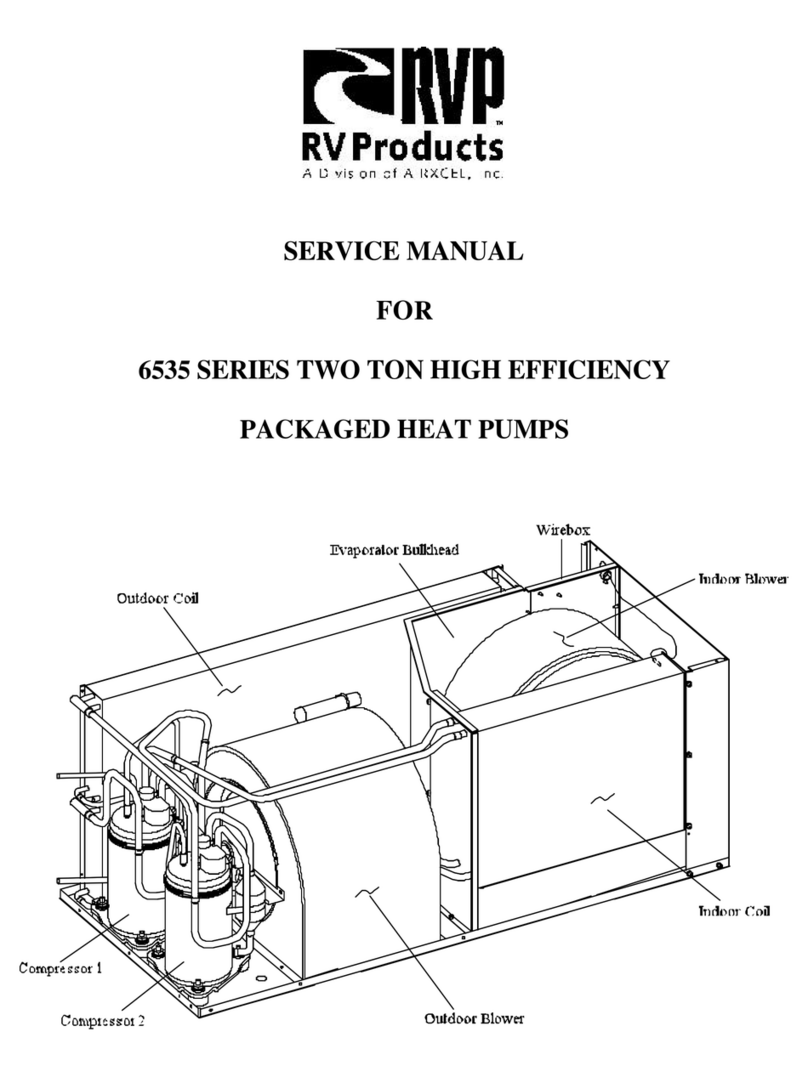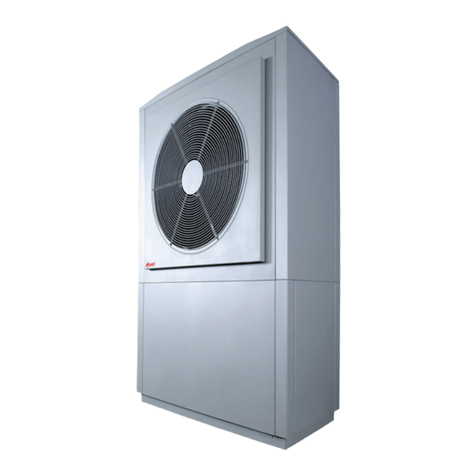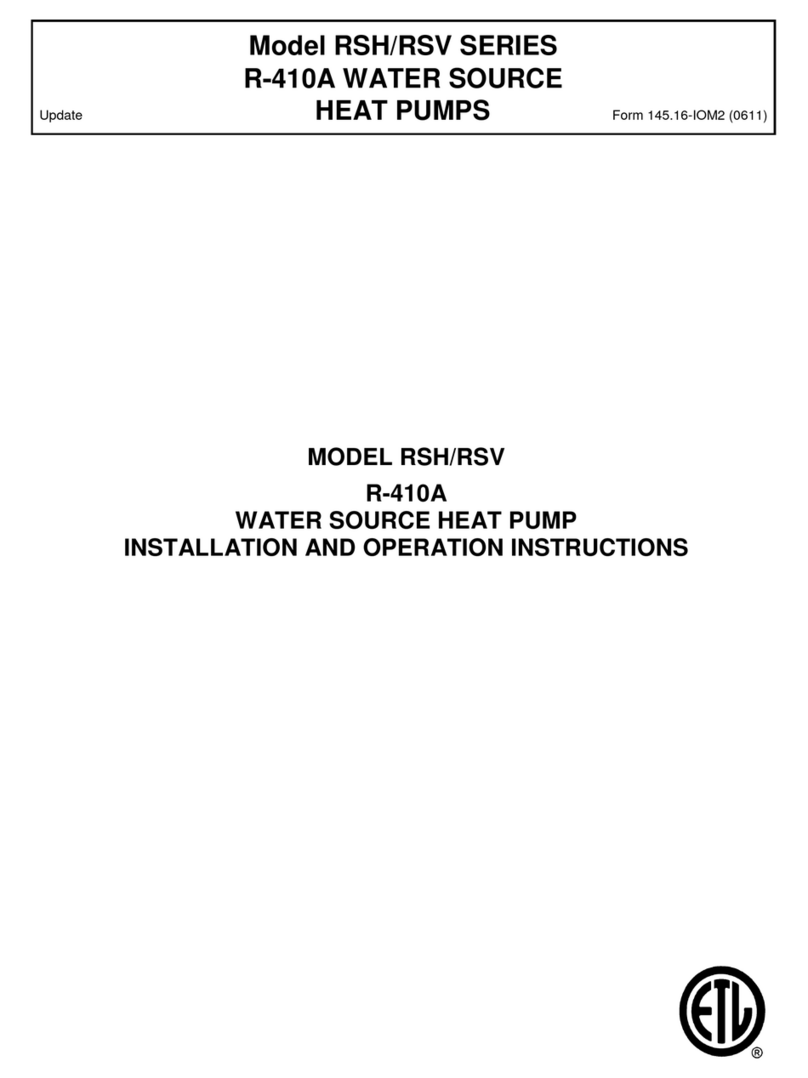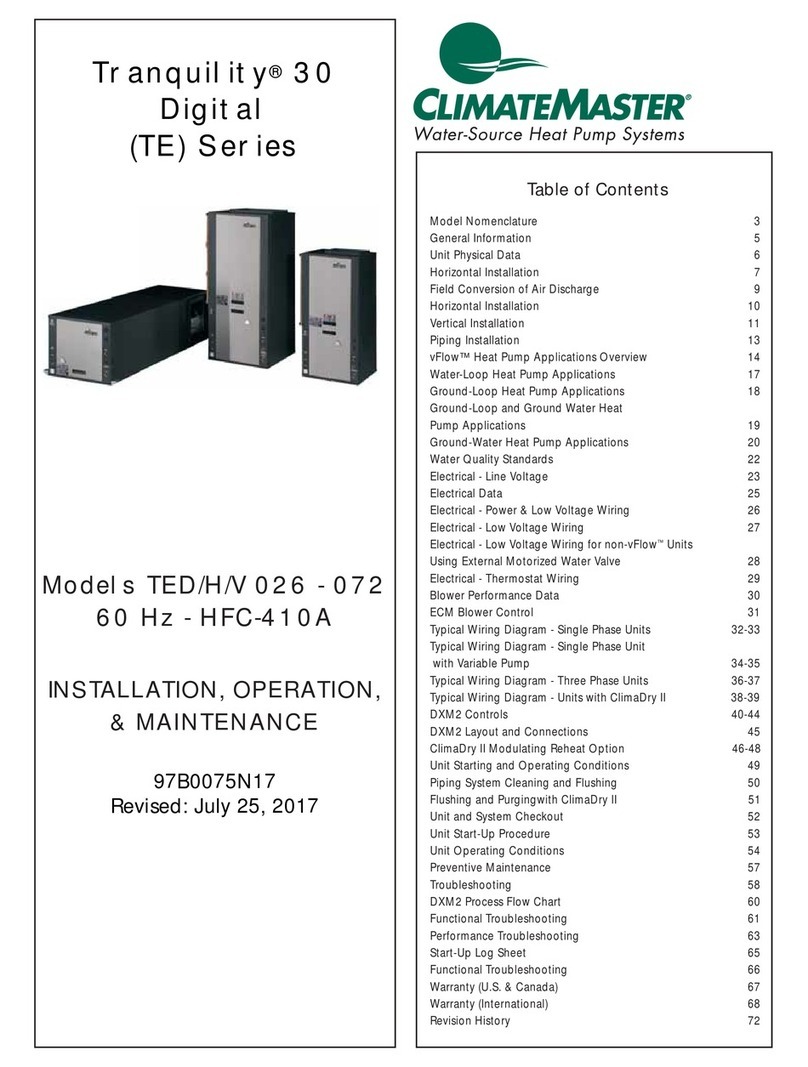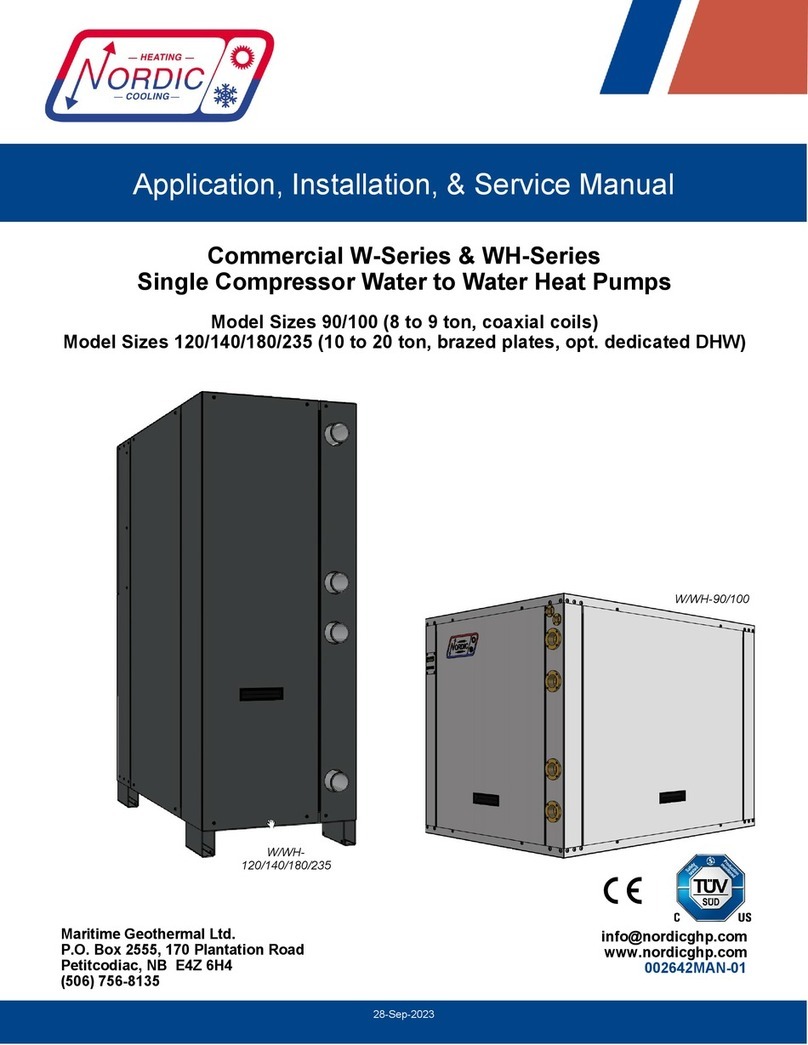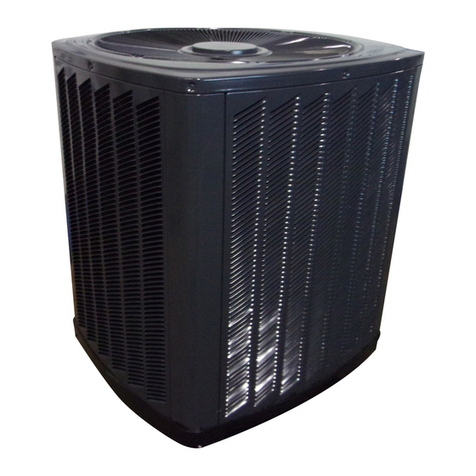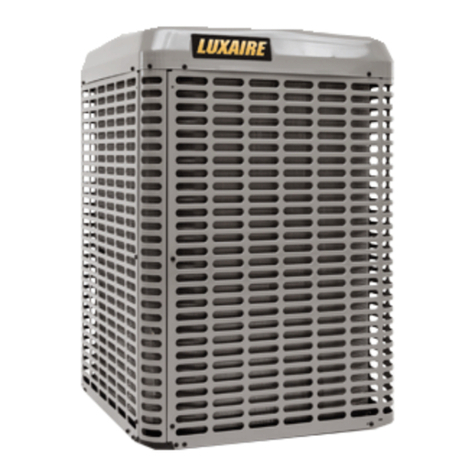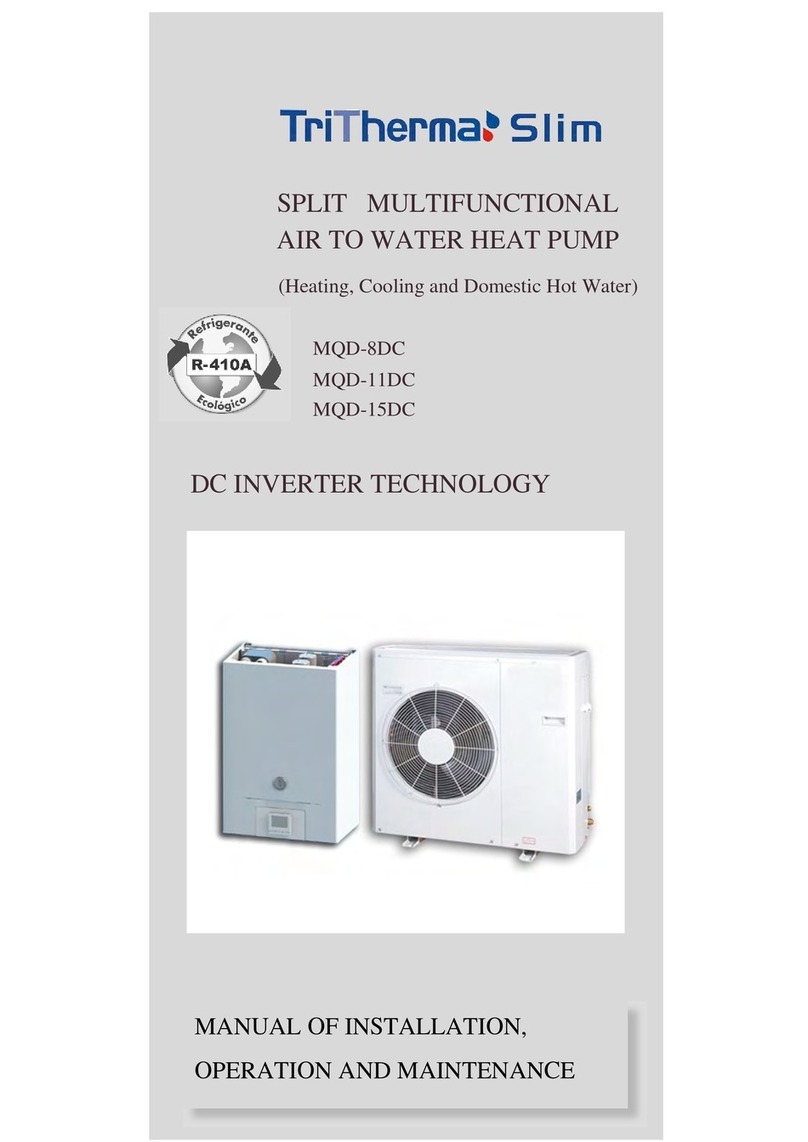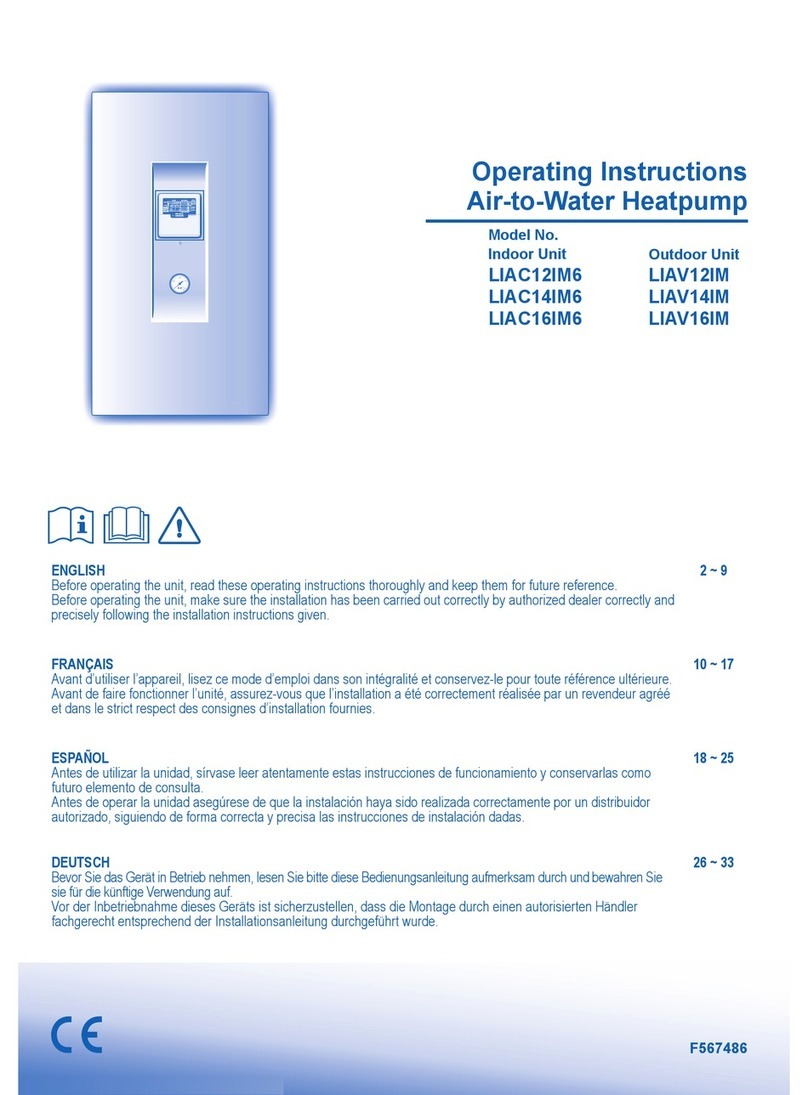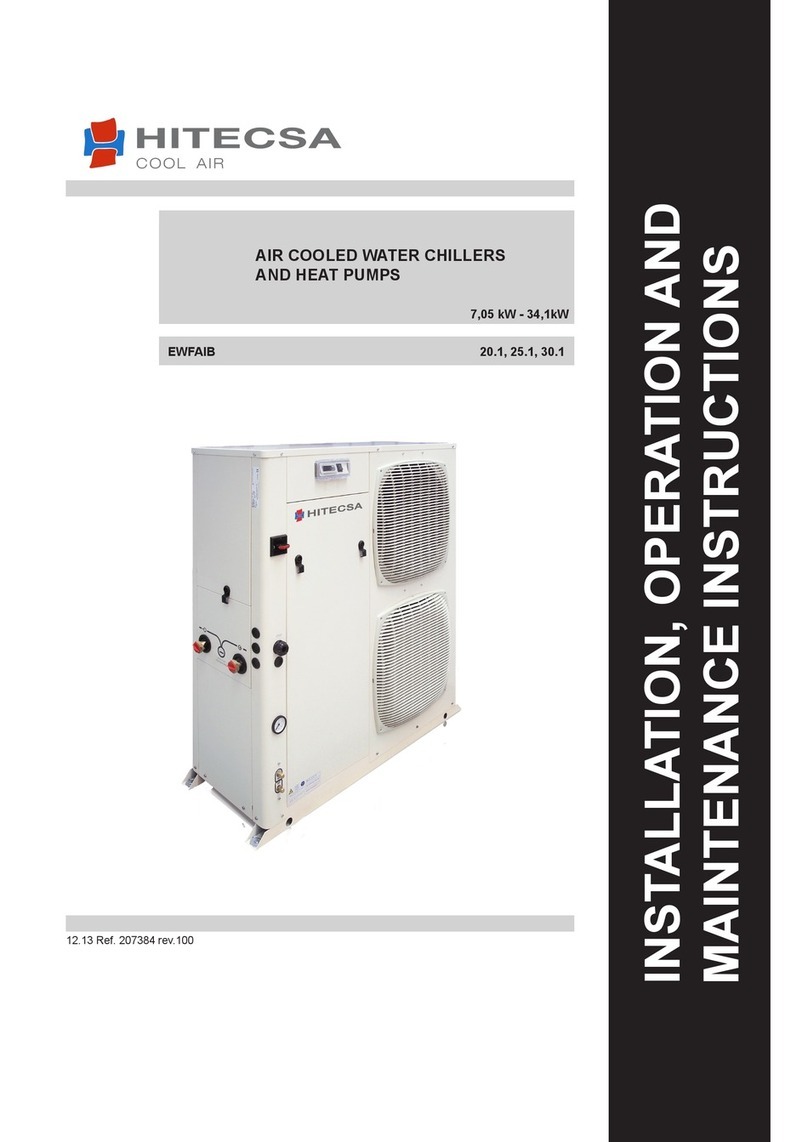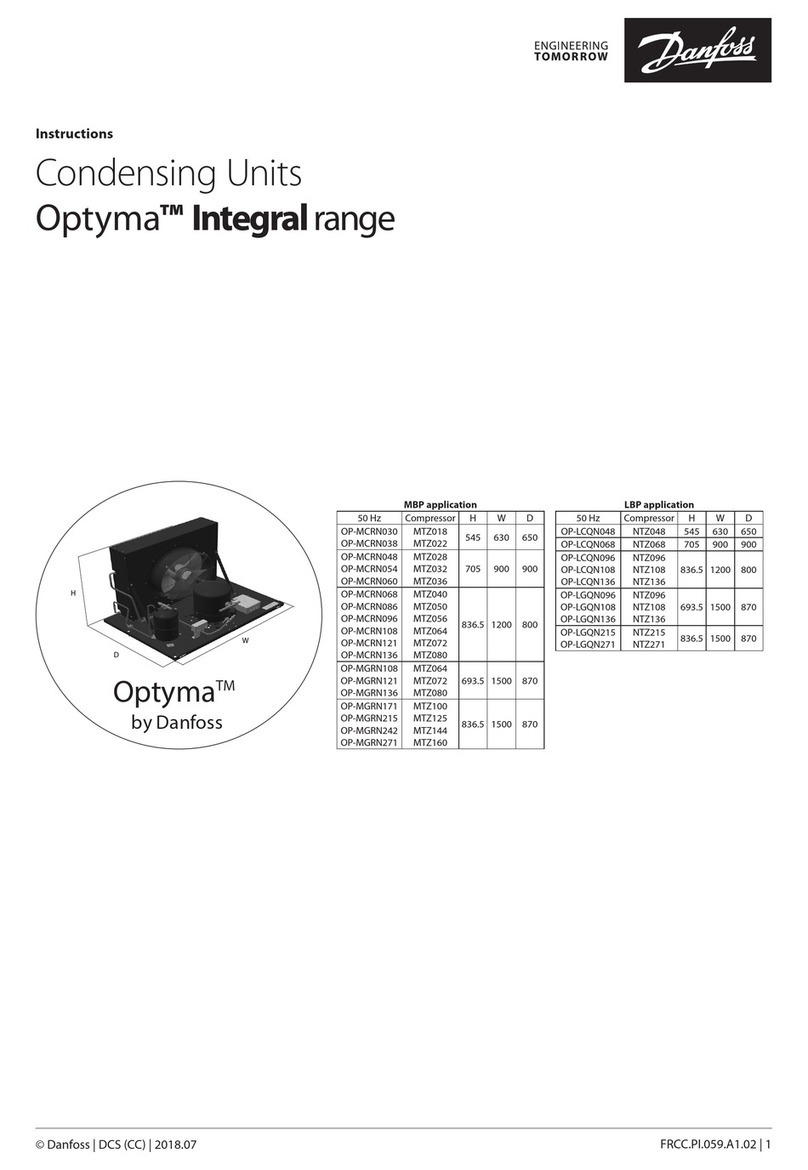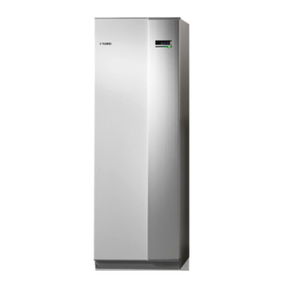
Contents
1 Introduction 4
2 Safety instructions 5
2.1 Safetywarning...................................................... 5
2.2 Safetyprecautions.................................................... 5
2.3 Legalconditions..................................................... 6
2.4 Storageandtransportconditions ........................................... 7
2.5 Tableoftechnicalparameters ............................................. 8
3 Installation manual 9
3.1 Workingconditions ................................................... 9
3.1.1 Workingenvironment.............................................. 9
3.1.2 Coolingcircuit.................................................. 10
3.1.3 Technical parameters of heating / cooling water . . . . . . . . . . . . . . . . . . . . . . . . . . . . . . . 10
3.1.4 Technicalparametersofwater......................................... 10
3.2 Preparation of space for the outdoor unit . . . . . . . . . . . . . . . . . . . . . . . . . . . . . . . . . . . . . . . 12
3.3 Fittingtheoutdoorunit ................................................. 15
3.4 Preparation of space for the indoor unit . . . . . . . . . . . . . . . . . . . . . . . . . . . . . . . . . . . . . . . 15
3.5 Indoorunitmounting .................................................. 16
3.6 Unitsconnection .................................................... 17
3.6.1 Refrigerantpiping ................................................ 17
3.6.2 Cableconnections ............................................... 21
3.6.3 Cableconnecting ................................................ 22
3.7 Connection of the heat pump to the heating system . . . . . . . . . . . . . . . . . . . . . . . . . . . . . . . . 24
3.7.1 Connectionmethodsfor:............................................ 29
3.8 Unauthorized connections to the heating system . . . . . . . . . . . . . . . . . . . . . . . . . . . . . . . . . . 30
4 Commissioning 31
4.1 Commissioning of the heating system . . . . . . . . . . . . . . . . . . . . . . . . . . . . . . . . . . . . . . . . 31
4.2 Activation ........................................................ 31
5 Shutdown 32
5.1 Short-termshutdown .................................................. 32
5.2 Long-termshutdown .................................................. 32
6 Faults and status messages 33
6.1 Errorcodestructure................................................... 33
6.2 Overview of faults and status messages . . . . . . . . . . . . . . . . . . . . . . . . . . . . . . . . . . . . . . . 33
6.3 Faultsandtroubleshooting............................................... 34
6.4 Statusmessages .................................................... 36
6.5 Protectivefunctions................................................... 37
6.6 Serviceorganization................................................... 40
7 Maintenance of the device and components 41
7.1 Maintenanceoftheoutdoorunit............................................ 41
7.2 Maintenanceoftheindoorunit............................................. 41
7.3 MaintenanceoftheDHWtank ............................................. 42
7.4 Maintenanceplan .................................................... 43
8 Design documentation 44
8.1 Connection of the heat pump to the heating system . . . . . . . . . . . . . . . . . . . . . . . . . . . . . . . . . 44
8.2 Hydrauliccircuit ..................................................... 47
8.3 Heating - range of working temperatures . . . . . . . . . . . . . . . . . . . . . . . . . . . . . . . . . . . . . . . 49
8.3.1 Floordryingprogram .............................................. 50
8.4 Cooling - range of working temperatures . . . . . . . . . . . . . . . . . . . . . . . . . . . . . . . . . . . . . . . 51
8.4.1 Dewpointtable ................................................. 51
8.5 Acousticparameters .................................................. 52
9 Technical data 53
9.1 Electrical wiring diagram of the indoor unit . . . . . . . . . . . . . . . . . . . . . . . . . . . . . . . . . . . . . . 53
2




















